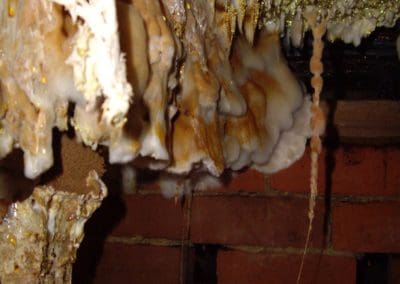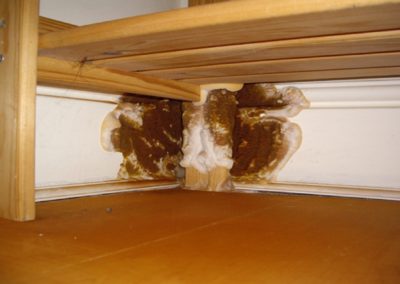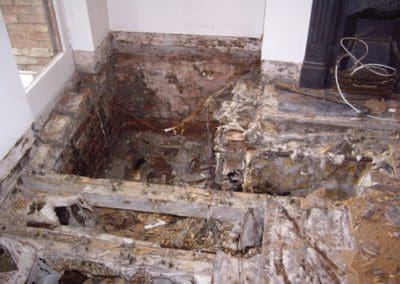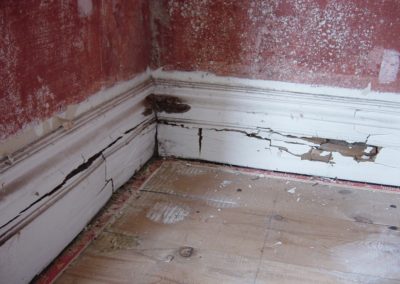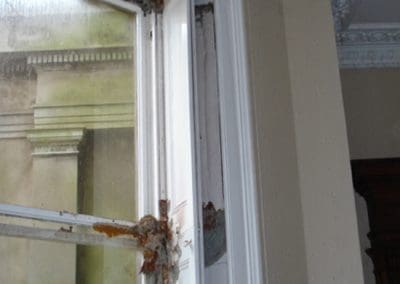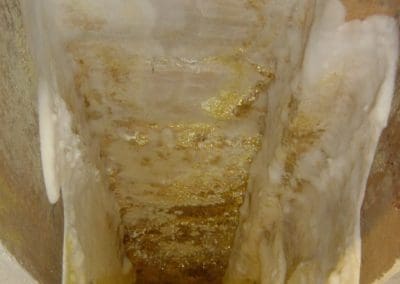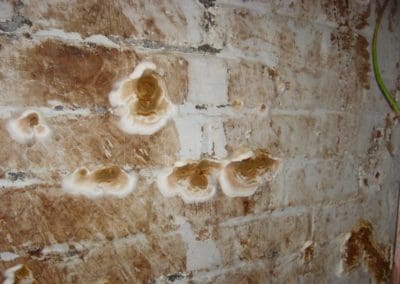Dry Rot Treatment
Wood rot is caused by various fungi which grow when the environmental conditions are right. It usually occurs when the moisture level of wood rises and is sustained at a level that will support fungal growth. Wood rots are divided into two groups: white rot and brown rot. White rots attack all components of the wood, ligin, cellulose and hemi cellulose and cause the affected wood to become fibrousy.
Brown rots (of which dry rot is one), only attack the cellulose and hemicellulose, causing the rot affected wood to crack in a cuboidal manner. Dry rot (serpula lacrymans) is a brown rot. All other wood rots are wet rots. Correct identification of the type of wood rot is essential, as is the need to determine the source (or sources) of moisture that led to the conditions that caused it.
Biocraft can carry out surveys and devise property-specific control and treatment regimes for dry rot. This will involve determining and removing the source of moisture ingress that has led to the outbreak.
All Biocraft surveyors are Certificated Surveyors in Remedial Treatments (CSRT). To arrange a dry rot survey or to discuss treatment, please call 0800 781 8358 or email [email protected].
Get in touch with us
For further information get in touch with Biocraft:
How does dry rot spread?
Dry rot tends to affect softwoods that are at an elevated and sustained moisture level. Dry rot growth is a combination of mycelium (mushroom textured sheets) and hyphae (thick strands). If present, a dry rot fruiting body will be a fleshy plate with rusty red coloured dust (dry rot spores).
The dry rot infected wood breaks down into large cubes and damage can occur in a relatively short period of time.
An untreated replacement softwood sash window frame was installed following a dry rot outbreak by a building contractor. This was done without adequate damp proofing protection and decayed to the point of replacement in less than three years. This is an example of the speed of dry rot decay, but also an example of not removing the cause of the dry rot prior to reinstating the damaged timber. It’s essential stop the source of moisture and promote drying. The dry rot treatment regime depends on the nature of the property and whether the dry rot affected areas will be available for ongoing monitoring.
How is dry rot treated?
Non-invasive dry rot treatment techniques (sympathetic) can be employed if the property owner is willing to accept a prolonged period of monitoring, coupled with enhanced drying measures.
Biocraft carries out dry rot treatment and control services in residential and commercial properties throughout Berkshire, Oxfordshire, Hampshire, Surrey and London.
To arrange a dry rot survey or to discuss treatment please call 0800 781 8358 or email [email protected].

